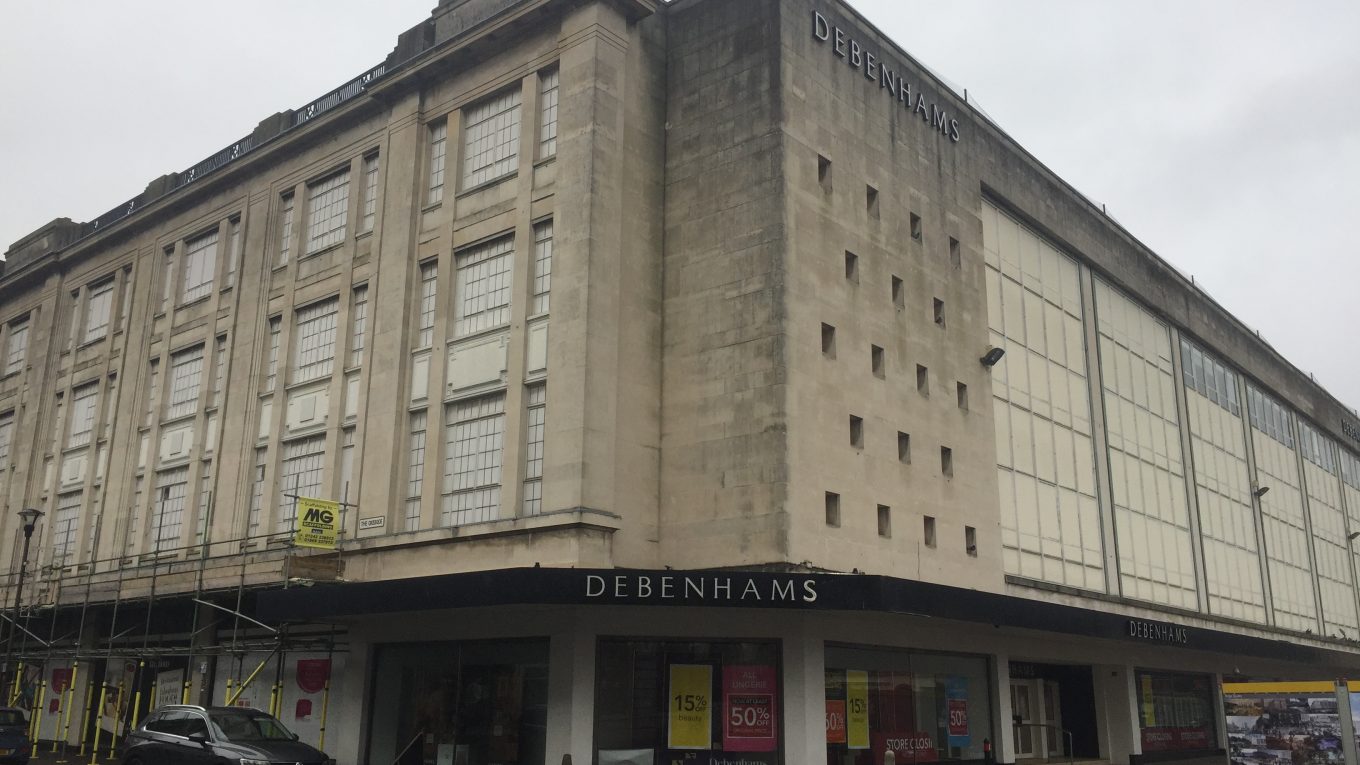Has Debenhams Changed? Taking a look back at the 80s
Television productions such as ITV’s Mr Selfridges show the glamour of London department stores and this popularity led to more shops popping up in towns across the country.
The Debenhams department store in Gloucester located in Kings Square faces its closure after 50 years as an anchor store of the high street. The closure of this store provides an opportunity to look back over the decades at the experiences of shopping and working at the store and the differences compared to the modern store.
This blog post explores the daily tasks and experiences of an employee of Debenhams which are based on memories from an oral history interview conducted with Glyn Fitzgibbon who worked in the Gloucester Debenhams store in the 1980s. Each section begins with a quote from the interview reflecting the daily tasks that could be undertaken on that day.
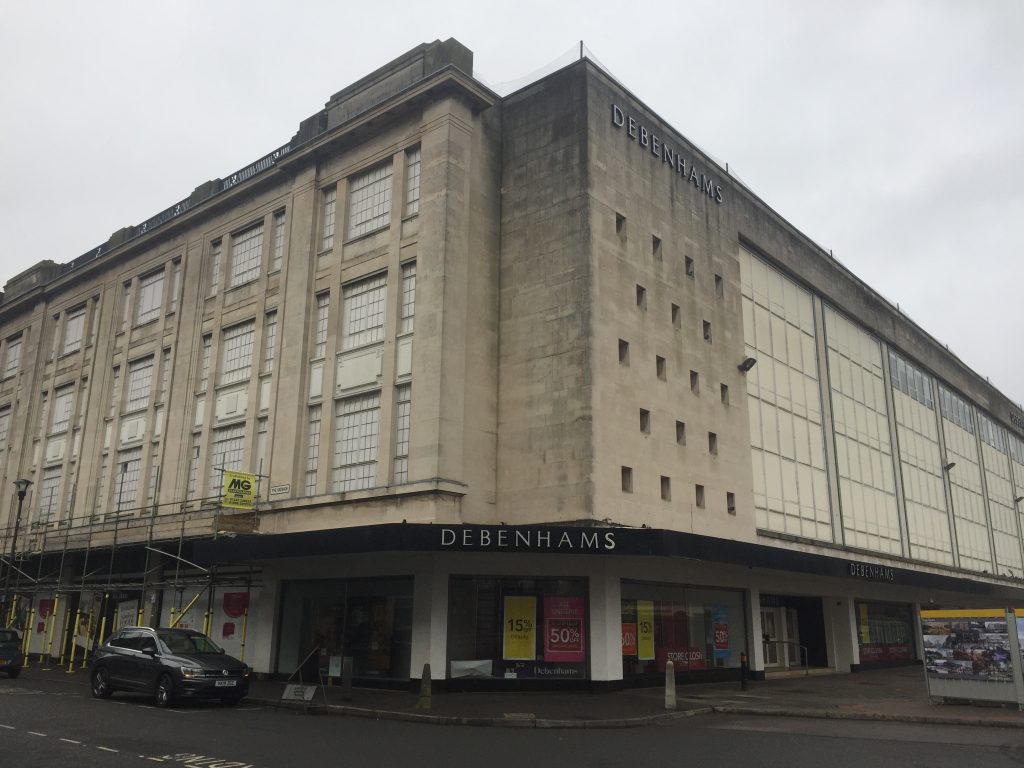
.
Monday “people would rush to see what the team of window dressers had done”
Grabbing the customers eye as they walked through Kings Square was the first task to be achieved by the department stores. A typical task could be to decorate the display windows. The window displays were a huge part of the attraction of department stores as customers would visit stores in order to see the new designs in the window. Compared to modern display windows which focus on a plain background with the focus on the clothes, the windows in the 80s told a story and created a spectacle in order to attract more customers.
The two images below are examples of the decadent shop windows that could be found in department stores across the country.
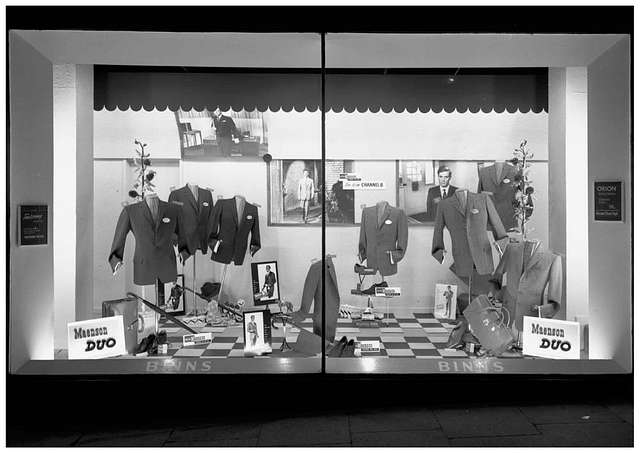
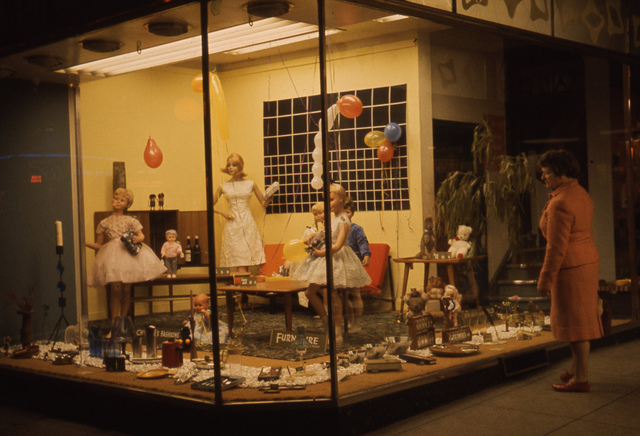
Tuesday “the whole focus of Debenhams was on service for the customer”
Providing good customer service was the key factor that separated Debenhams from lower brand stores such as Woolworths. This distinction could be visually seen in the uniform of the staff. Debenham’s employees dressed in uniform that resembled a BA cabin crew’s, smartly dressed in a blazer and tie compared to the simple two-piece casual wear for Woolworth’s staff. The number of shop assistants present on the floor was far greater than in today’s store with the focus on delivering outstanding service for customers.
This is shown through adverts depicted in newspapers such as The Times which boasted that shopping in Debenhams allowed customers to shop in ‘leisured comfort’ whilst receiving the ‘Debenhams touch’. A role for female employees was to stand at the entrance of small mezzanine levels in store that contained items such as lingerie to allow women privacy to shop and to provide further assistance.
Wednesday “Debenhams was renowned for having a brilliant Christmas grotto which as a child was magical.”
From Easter eggs to snowmen, one of the most exciting jobs for employees was to help set up the seasonal displays. Seasonal displays were a major attraction in department stores as they created an experience for all the family. Employees worked together in order to provide displays such as Santa’s grotto to create an immersive experience for families to enjoy and to attract more people to the store. These displays featured dazzling lights, the sounds of Christmas bells, smells of gingerbread and even showcase new technologies such as animatronic reindeer to appeal to all the senses of the children and the adults as they explored the attraction. This image below shows the popularity of Santa’s grottos as the large room is filled with families and children.
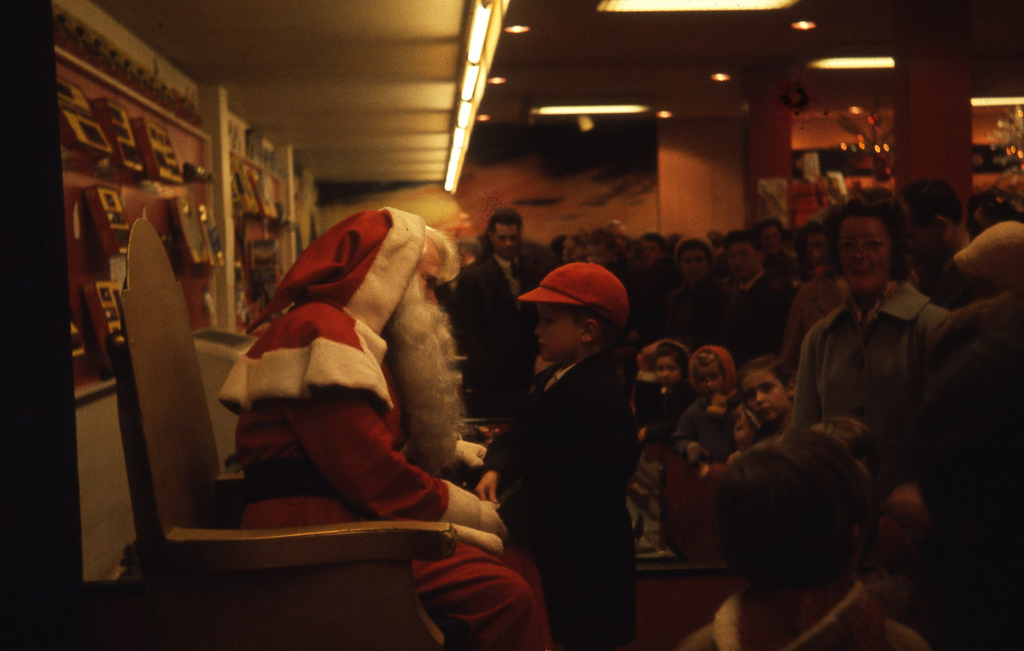
Thursday “every Thursday you went to collect your weekly pay packet from the cash office”
For many employees Thursday was the most important day of the week as it was payday! At the end of the day, employees could head to the pay office and collect a brown envelope containing cash for the week. A job unimaginable for the visitors of Gloucester Debenhams today would be to work in the busy food hall. During the 1980s the store had a successful food hall that sold luxury food items such as chocolates, cakes, alcohol and cheese. This displayed the department store focus on novelty items to separate itself even further from other shops.
Friday “you had to cut you way into the office with a knife to get through the smoke”
Debenhams were focused on bringing top fashion into the lives of people across the country. An important job for employees of Debenhams was to order stock each week to replenish the stock for the entire store. If you could make your way through smoke filled offices, employees had to calculate new stock to order for the entire store. Adverts for the company show that brand designers took clothes from the collections of top models in London such as Christian Dior and recreated them in the same material. This was hugely popular with the public as it allowed them to purchase the same items that they could see being worn by top models in London.
Saturday “once a week my mum, brother and I would head into town to visit my Great Aunt”
Transporting customers around the large department store was a unique job in the 1980s as it involved working as a lift operator. Wearing a smart uniform adorned with a hat, the lift operator’s role was to open and close the lift doors to prevent customers from injuring themselves and to make the customer’s experience special.
Despite the entire family visiting you at work sounding like a nightmare, it was a regular occurrence for the whole family to take the bus into town for a day out to the store to visit family members at work. The size of department stores and variety of products allowed the family to complete all their shopping in one location whilst providing entertainment for children at the same time.
Sunday
For employees working in Debenhams, Sunday was always a day off as stores could not open on Sundays until 1994.
Working in Debenhams during the 1980s was prestigious job for life that was at the heart of the people of Gloucester as the community worked alongside one another in the hundreds of roles across the store. As we face the closure of the Gloucester store we should remember and celebrate the magical memories that were created over the decades of shopping in the store with family and friends.
Sources and extra reading
To read about more memories of Gloucester Debenhams, attached below is the entire interview so you can discover more about the experiences of working at Gloucester Debenhams in the 1980s. .
Follow these links to uncover more about the history of Debenhams –
https://www.bbc.co.uk/news/in-pictures-55147787
Visit Gloucestershire, Gloucester in the 1950s/60s
Here are further sources you can explore to find out more about the department stores of the late 20th century-
Alexander, Andrew. “The Study of British Retail History: Progress and Agenda.” In The Routledge Companion to Marketing History, edited by Brian Jones and Mark Tadajewski, 155- 172. London: Routledge, 2016 .
Scott, Peter and Walker, James. “Advertising, Promotion, and the Competitive Advantage of Interwar British Department Stores.” The Economic History Review 63, no. 4 (2010): 1105-128.

